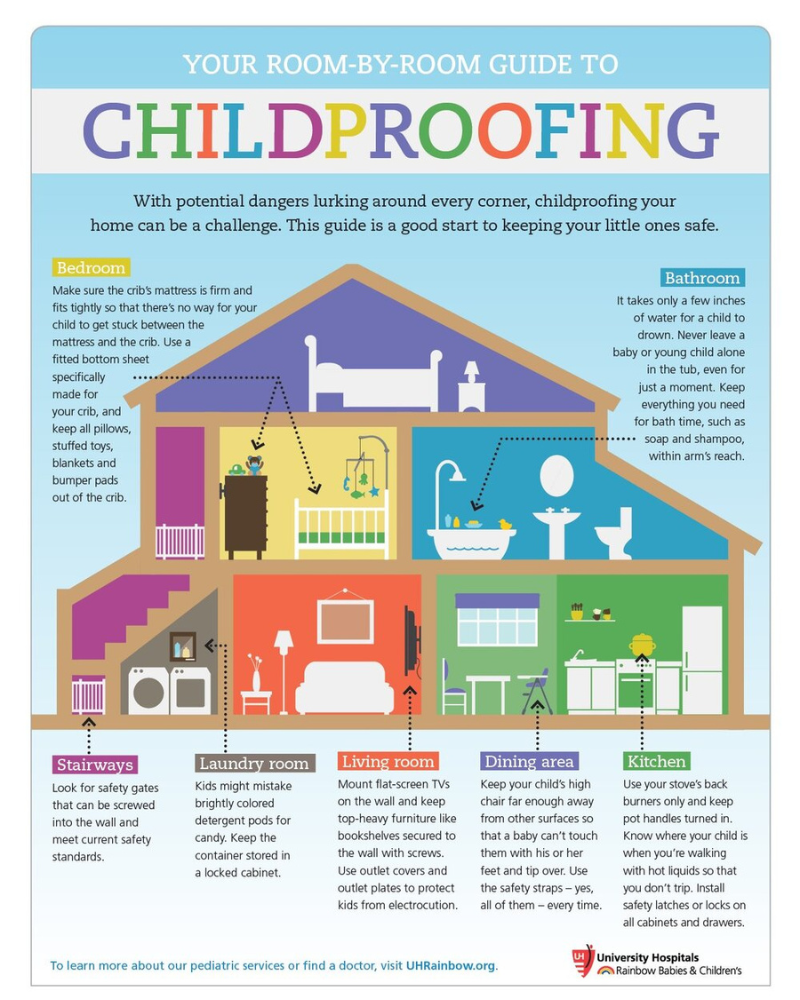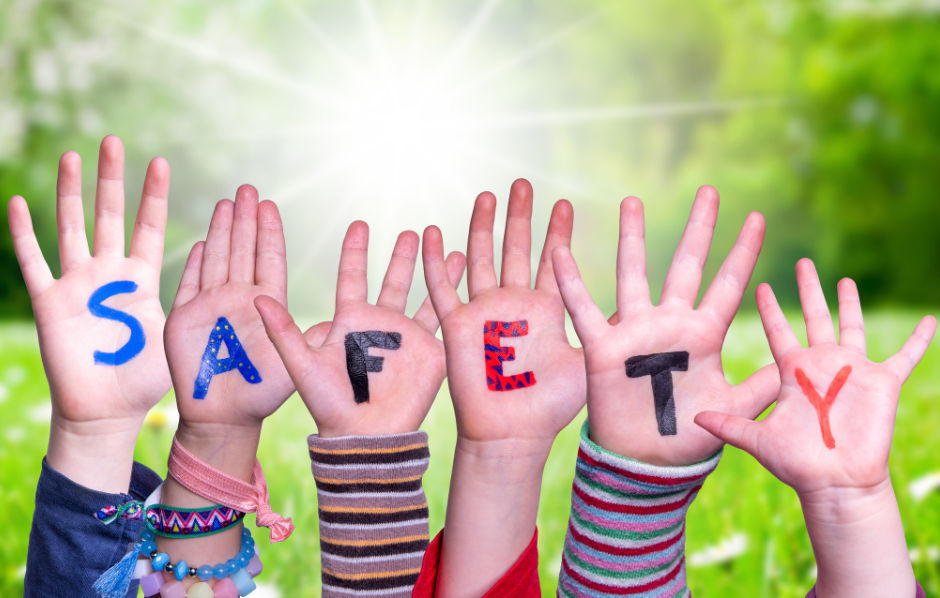Children are uniquely vulnerable to a host of potential risks and dangers starting from the time they leave the hospital and are strapped into their first car seat. It’s normal for kids of all ages to explore and take risks. Unfortunately, they also frequently get hurt while they are doing it.
According to the Centers for Disease Control & Prevention National Action Plan for Child Injury Prevention nearly 9 million children annually visit the emergency room for an unintentional injury. Unintentional injuries are the leading cause of death among children ages 1 to 19, representing nearly 40 percent of all deaths in this age group. Injuries claim the lives of 25 children every day.
Some accidents children are involved in are out of our control. But safety begins in the home and there is much parents and caregivers can do to reduce risks and eliminate hazards.
Safety Tips

In observance of National Child Safety and Protection Month, let’s take a look at some ways to help make your home as safe as possible for children:
KITCHEN
- Keep cleaning supplies, medicines, garden chemicals, and toxic art supplies locked away or on a high shelf. Make sure these items are put away immediately after each use.
- Purchase over-the-counter and prescription medicines with childproof caps.
- Never use food containers to store nonfood substances.
- Never carry hot liquids or food while holding your child, and never leave these items within reaching distance of young children.
- Keep babies and young children away from hot appliances and stoves.
- Program the contact number for Poison Control ((800) 222-1222) in your phone to use in the case of accidental poisoning.
BATHROOM
- Never leave children unattended in the bath or shower (Small children can drown in less than two inches of water.)
- Install slip-resistant mats.
- Keep razors out of reach of children.
- Pay close attention to water temperatures. (Set your water heater at 120F to avoid scalds)
BEDROOM
(For children under 1, two-thirds of injury deaths are due to suffocation.)
- Place your baby on their back to sleep,
- Do not allow infants to sleep with blankets, stuffed animals, or other items before the age of 1.
- A firm mattress and fitted sheet should be the only things in a crib.
- Place your baby’s crib and other furniture away from windows and blinds.
- Do not install blinds with strings in your child’s room
CAR
- Use a car seat or booster seat and seat belt that is appropriate for your child’s age and size. The National Highway Traffic Safety Administration has a helpful tool on their website in which you can enter your child’s information and get specific recommendations.
- Children should ride in the back seat.
- Everyone should always buckle up.
TOYS
- Be aware of any recalls on toys and games for kids. Check the Consumer Product Safety Commission lists.
- Keep choking hazards out of reach.
- Pay attention to safety warnings on items used by children.
WATER
- Keep safety fences around pools.
- Carefully monitor children around any bodies of water.
- Empty all water from buckets, or other containers when not in use.
- Teach your child to swim as young as possible.
- Teach your child to never dive into water unless an adult has checked the depth of it.
- Make sure children who can’t swim well wear lifejackets when in and around the water.
ELECTRICITY
- Make sure smoke and carbon monoxide monitors are functioning.
- Cover all electrical outlets.
FIREARMS
- If you choose to keep a gun, make sure it is kept unloaded and in a locked place separate from ammunition.
Injuries are going to happen, even when you do you do everything you can to protect your children. Remember, learning first aid and CPR are the best ways to be prepared when the worst happens. Contact TSS to learn more about our First Aid and CPR training courses.

